The Franklin Tree (Franklinia alatamaha, below) will often bloom into late September when the leaves begin to turn to a beautiful orange-red. The contrast of colorful foliage and large white blooms with prominent yellow stamens is striking, but not this year. The last of the late summer blooms are fading, I see no more buds ready to open, and the foliage has not begun to change color.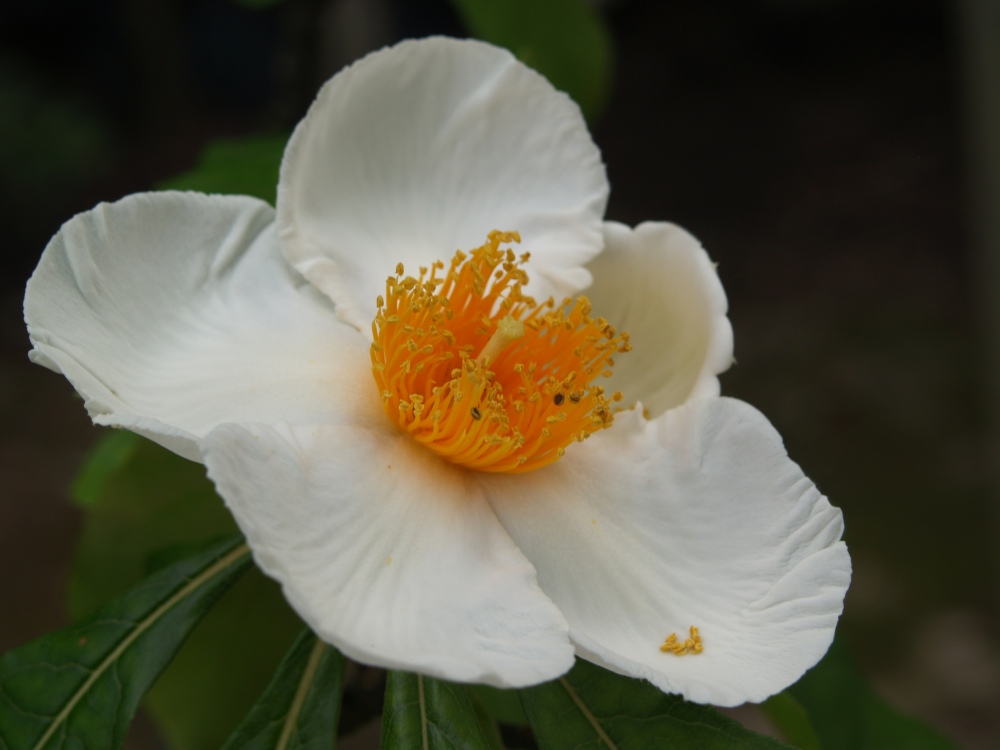
There are a number of bloomers in the garden that are ending early or starting late. Why? The obvious answer is the inordinate number of hot days in this summer, but why worry about it, every season has its odd happenings, so the gardener must learn to enjoy things as they come. There are problems that require the gardener’s intervention (pulling weeds and banishing bugs), but this isn’t one of them.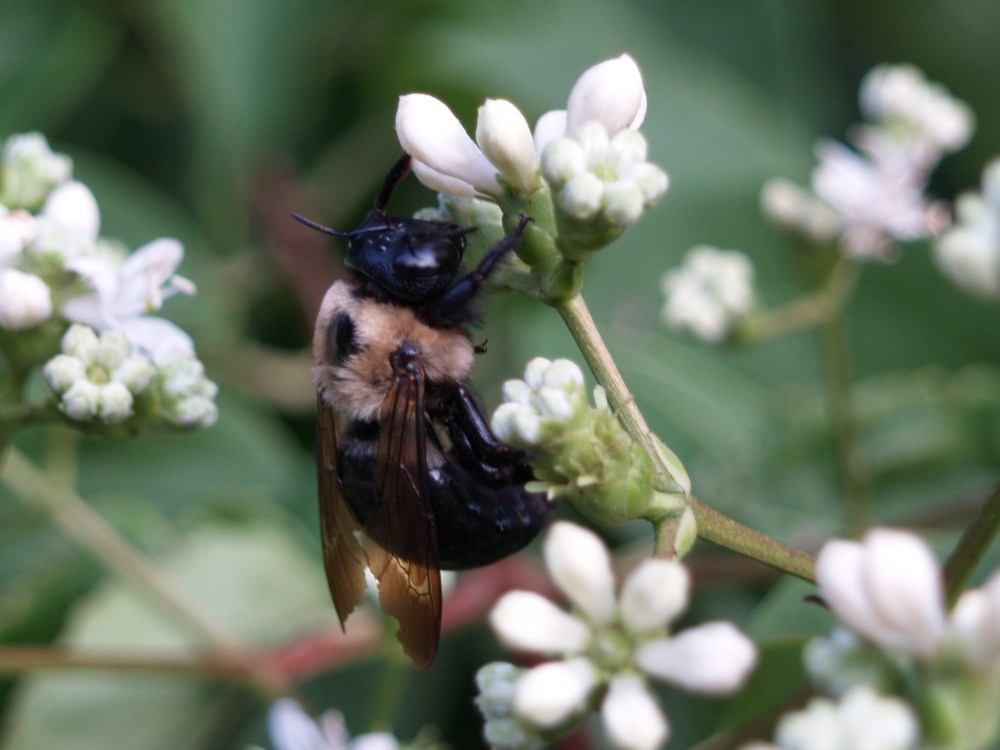
The small white blooms of the Seven Son Tree (Heptacodium miconioides, above) are fading more quickly than is usual, so the garden is noticeably calmer with fewer bumblebees and butterflies buzzing about. The fall foliage color of the Seven Son is unworthy of mention, but the blooms are followed by pink-purple bracts that are at least as attractive as the blooms, so that the tree remains colorful into October.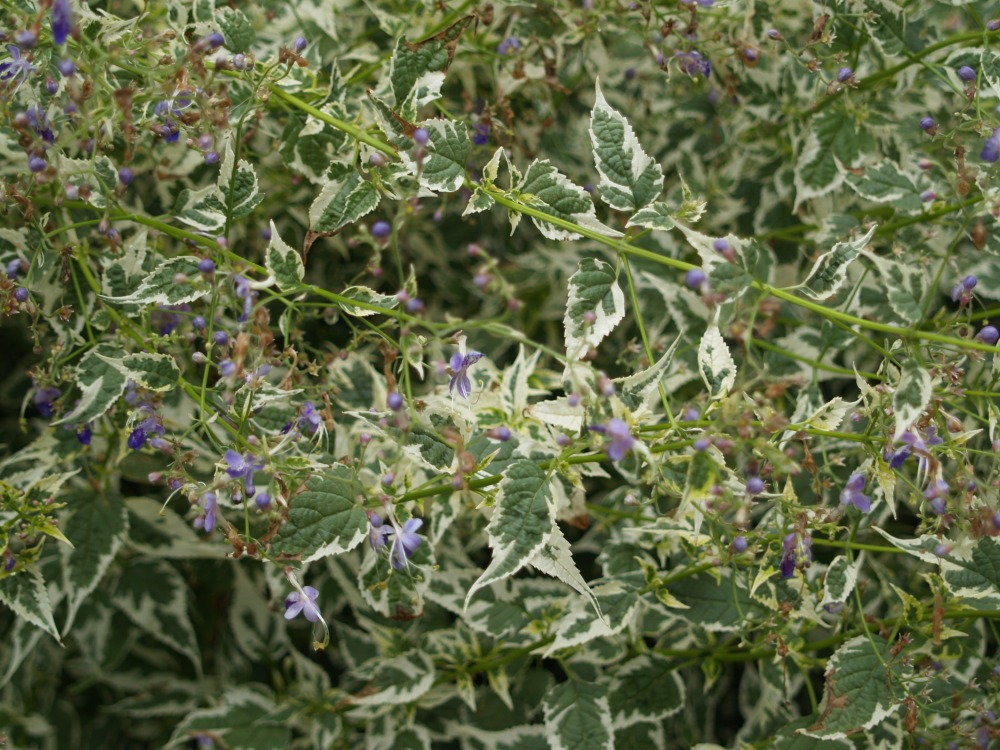
The gold leafed caryopteris (‘Worcester Gold’ and ‘Jason Sunshine Blue’) are still in bloom, but showing some sign of fading as the variegated ‘Snow Fairy’ (above) is coming into full bloom. The flowers of Snow Fairy are smaller and more scattered, so the color from its blooms is not so pronounced, but the green and white splotched leaves are splendid from late spring until frost.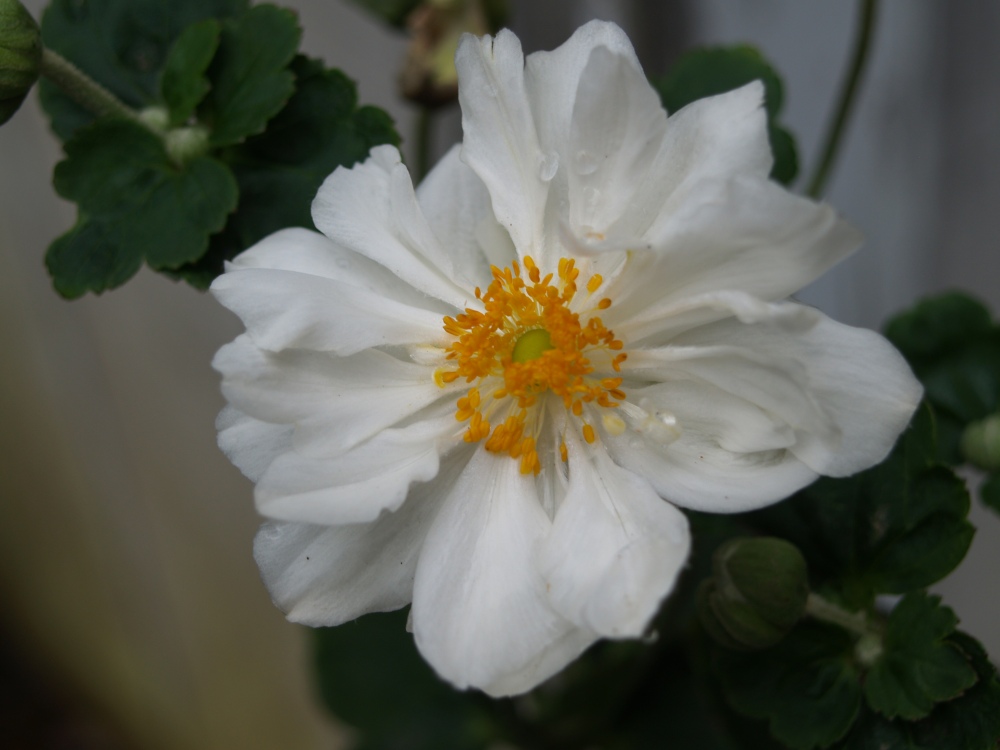
With the extended heat other late summer blooming perennials have been later in developing buds, and are only now beginning to show color. Today there are only a few blooms on the Japanese Windflowers (Anemone ‘Whirlwind’, above), but numerous buds, so there will be blooms for several weeks. Despite the heat the windflowers have grown quite tall, except for a few that were nibbled by deer that are more compact and just beginning to bud.
The common names of many plants can be of mysterious origins, but windflowers are aptly described. The tall flowering stalks bend and sway in the breeze, and will occasionally require staking, but not this year since there have been no severe storms.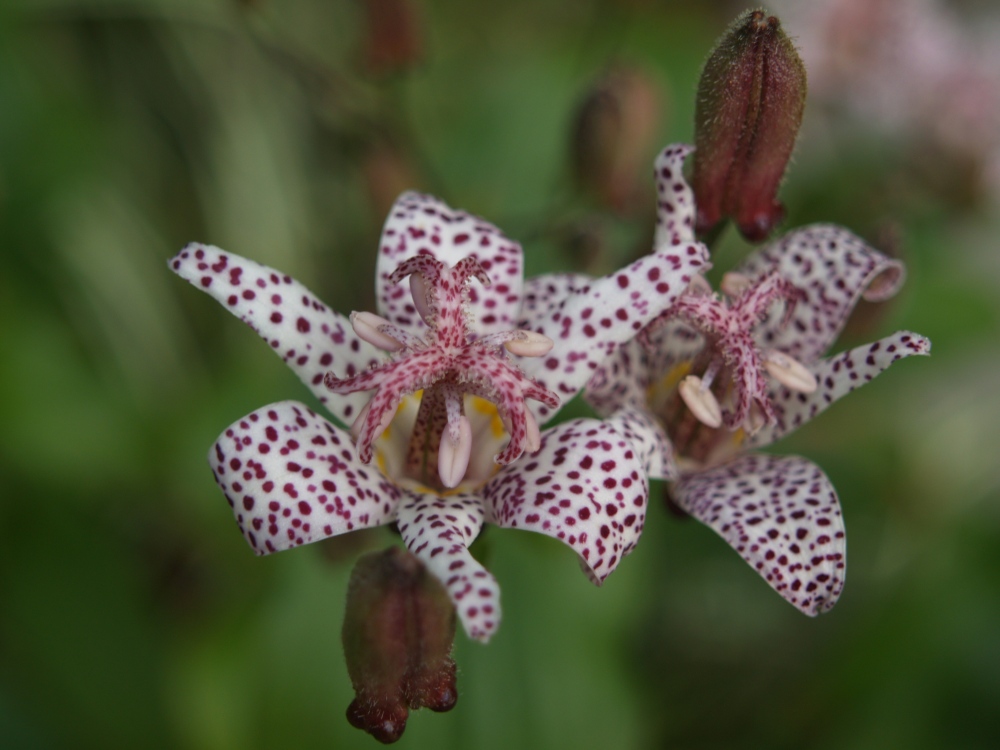
Most of the toad lilies (Tricyrtis, above) are budded heavily, and within days of blooming. One cultivar has been blooming for several weeks, but I cannot recall a time when all weren’t blooming by the start of September.
The tardy windflowers and toad lilies will bloom into October, likely until frost, so enjoy the cooler temperatures and the abundant blooms, and don’t fret that the sunflowers are a few weeks late.